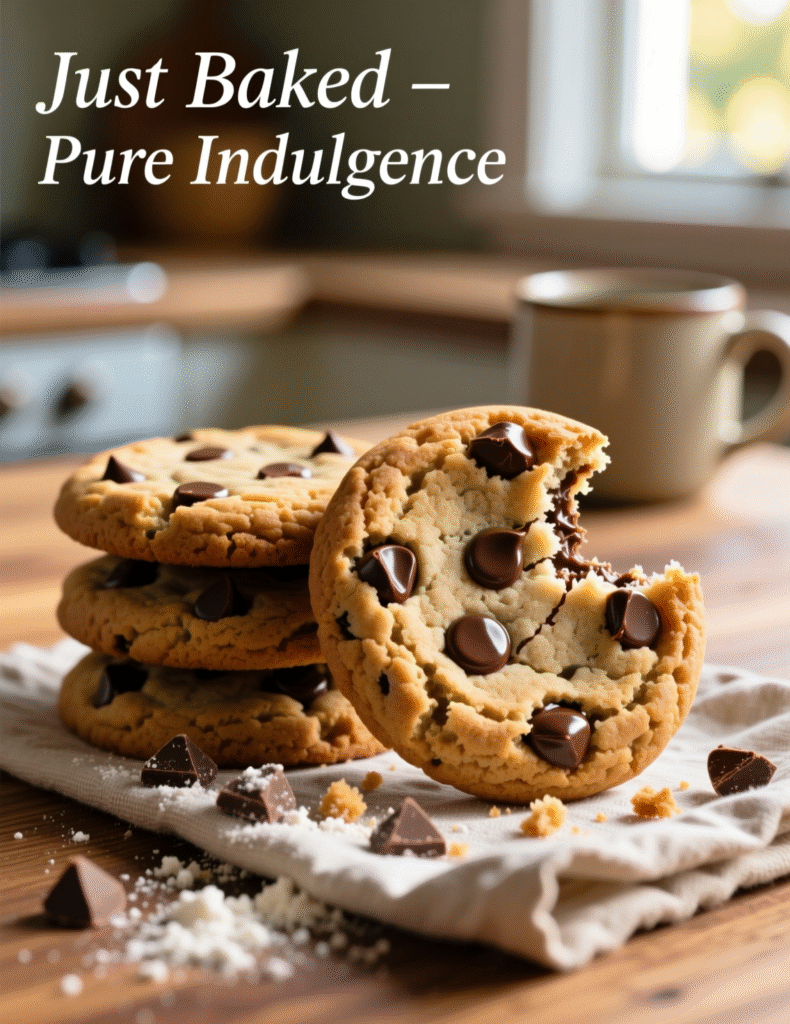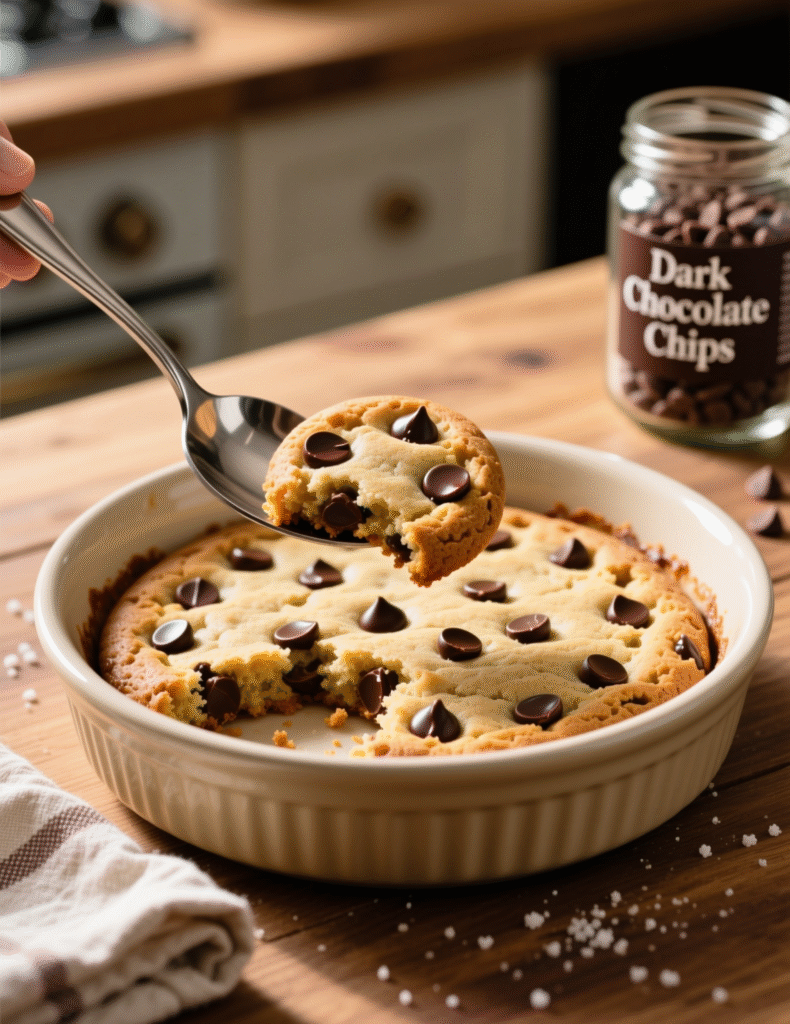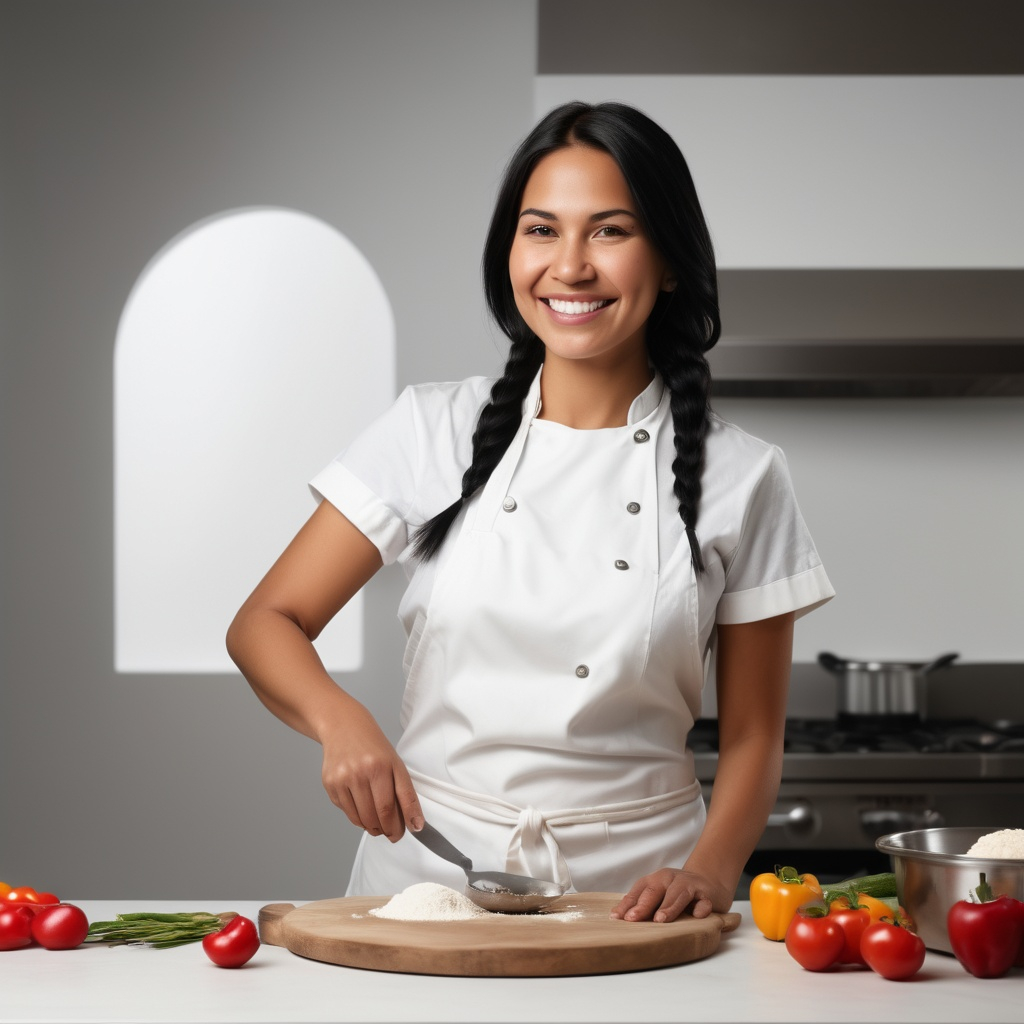There’s a reason chocolate chip cookies have earned a permanent spot in the pantheon of classic desserts. They’re comfort food, nostalgia, and culinary chemistry all rolled into one. But making them perfectly? That’s an art—and a science. This isn’t your grandma’s “throw-it-all-in” recipe. Here, we dive into the nuances, techniques, and expert secrets that elevate a standard batch into an irresistibly soft, chewy, and flavor-packed dozen. If you’ve ever wondered why some cookies spread too thin, or why the centers end up dry, you’re in for a treat—figuratively and literally.
Understanding the Science Behind Chocolate Chip Cookies
Every bite of a cookie is the product of precise chemical reactions. The interplay between flour, fats, sugar, and heat determines texture, flavor, and mouthfeel.
- Flour Matters: All-purpose flour is the standard, but protein content makes a huge difference. High-protein flours yield chewier cookies, while low-protein flours create tender, cakier bites. Some bakers even blend flours for a hybrid texture.
- Butter vs. Shortening: Butter provides flavor, richness, and slight spread. Shortening contributes tenderness and limits spread. For most professionals, a combination of the two strikes a perfect balance. And yes, room temperature butter is crucial—it incorporates air more efficiently, lending lift.
- Sugars Speak Louder Than Words: Brown sugar adds moisture and chew, white sugar promotes crisp edges. Adjusting ratios subtly can transform the cookie from soft-centered to crunchy-edged perfection.
Even tiny tweaks—a pinch more salt, a few extra chocolate chunks—can alter outcomes in ways novices often underestimate. That’s why precision, patience, and understanding ingredient behavior are non-negotiable in serious baking.
Choosing the Right Chocolate
Chocolate is not a one-size-fits-all component. The type, quality, and form of chocolate dramatically affect flavor, texture, and appearance.
- Semi-Sweet vs. Milk: Semi-sweet is classic for balance; milk chocolate is sweeter and creamier. Some professionals blend the two to hit a nuanced sweetness profile.
- Chopped Bars vs. Chips: Chopped chocolate melts differently than pre-formed chips, creating pockets of gooeyness. Chips often hold shape due to stabilizers, but bars offer more nuanced flavor.
- Temperature Matters: Cold chocolate melts slower, maintaining structure; room temperature chocolate integrates seamlessly. Strategic placement in dough can yield a rustic, artisan look—something professional bakers love for presentation.
The Role of Temperature and Timing
Baking is not just about the oven setting; it’s about orchestration.
- Chilling the Dough: Resting dough 24-48 hours in the fridge develops flavor. Maillard reactions intensify sweetness and add depth. Cold dough also limits spread, producing thick, chewy cookies rather than thin, brittle ones.
- Oven Thermometer: Many home ovens run hotter than their dial indicates. Professional bakers rely on thermometers for accuracy. Even a 10-degree variance can overbake or underbake cookies.
- Baking Sheets and Liners: Heavy-gauge sheets conduct heat differently than thin ones. Parchment paper prevents over-browning on the bottom while ensuring even cooking. Some chefs even double-sheet for extra insulation.

Expert Tips for Perfect Texture
Texture is the hallmark of a cookie done right. Achieving that chewy-crisp balance requires attention to detail.
- Creaming Butter and Sugar: Over-creaming creates air pockets, leading to fluffier, cake-like cookies; under-creaming produces denser bites. Most pros aim for a smooth, light mixture—long enough to incorporate air, short enough to avoid drying the dough.
- Eggs and Emulsification: Eggs bind ingredients and add moisture. Using one whole egg plus an extra yolk can increase chew without sacrificing structure. Yolks are fat-rich, boosting tenderness.
- Mix-Ins and Distribution: Stirring by hand vs. machine affects chocolate dispersion. Overmixing activates gluten, toughening the cookie. Gentle folding ensures even chocolate pockets without compromising tenderness.
Troubleshooting Common Issues
Even seasoned bakers encounter problems. Understanding root causes prevents repeated mistakes.
- Flat Cookies: Usually caused by warm butter, excess sugar, or insufficient chilling. Adjusting these variables typically corrects spread.
- Dry, Crumbly Cookies: Overbaking is the main culprit. High-protein flour or low-fat substitutions can also lead to dryness. Precision in timing and ingredient selection prevents disappointment.
- Uneven Baking: Crowded sheets or inconsistent oven heat creates uneven edges or centers. Rotating trays midway through baking often solves this.
Step-by-Step: Irresistible Chocolate Chip Cookies Recipe (12 Servings)
Ingredients
- 2 1/4 cups all-purpose flour
- 1 tsp baking soda
- 1 tsp salt
- 1 cup unsalted butter, room temperature
- 3/4 cup brown sugar, packed
- 3/4 cup granulated sugar
- 2 large eggs, room temperature
- 2 tsp pure vanilla extract
- 2 cups semi-sweet chocolate chunks or chips
Instructions
- Preheat oven to 375°F (190°C). Line baking sheets with parchment or silicone mats.
- In a bowl, whisk together flour, baking soda, and salt. Set aside.
- Cream butter and both sugars using a mixer on medium speed until fluffy—about 3-4 mins. Scrape bowl as needed.
- Beat in eggs, one at a time, then add vanilla. Mix until fully incorporated.
- Gradually fold in flour mixture. Avoid overmixing. Dough should be thick, slightly sticky.
- Stir in chocolate chunks evenly. Chill dough for 30 mins if desired.
- Scoop 2-tablespoon portions onto prepared sheets, spacing 2 inches apart.
- Bake 10-12 mins, until edges are golden but centers soft. Rotate sheets halfway for even baking.
- Cool on baking sheet 2 mins, then transfer to wire racks. Cookies continue to set as they cool.
Real-World Baking Insights
Professional bakers often emphasize the art of observation. Dough behavior in the bowl, aroma during baking, and cookie appearance on the sheet offer clues about doneness. Relying on timers alone is risky.
Batch size also influences results. A single dozen on a full sheet bakes differently than half a sheet. Airflow, tray material, and oven load all factor into the chemistry. In commercial kitchens, rotating racks and monitoring every tray is standard practice.
Emerging Trends in Chocolate Chip Cookies
Modern bakers explore textures and flavors beyond traditional norms.
- Salted Brown Butter: Intensifies nutty, caramel-like notes.
- Alternative Flours: Almond or oat flour adds chew and subtle flavor.
- Stuffed Cookies: Caramel, Nutella, or peanut butter centers create indulgent experiences.
- Artisan Presentation: Chunky, rustic cookies with slightly uneven shapes signal hand-crafted quality—preferred in high-end cafés and bakeries.
Common Misconceptions
- “More Chocolate Means Better”: Overloading chocolate can affect structure, causing collapse or uneven baking. Balance is key.
- “Soft Cookies Can’t Crisp”: Controlled cooling on sheets ensures edge crisping while maintaining a soft center.
- “Room Temperature Ingredients Are Optional”: Butter and eggs at correct temperatures are vital for proper emulsion and texture. Skipping this step is a common rookie mistake.
Pro-Level Storage and Serving Tips
Cookies are best served fresh but can maintain quality with smart storage.
- Short-Term: Airtight container at room temperature for up to 3 days.
- Long-Term: Freeze dough balls on a tray, then transfer to freezer bags. Bake from frozen; add 1-2 minutes to time.
- Reheating: 5-10 seconds in the microwave or 3 mins at 300°F (150°C) revives softness and aroma.
Pairing cookies with milk, coffee, or tea isn’t just traditional—it’s chemical. The fats in chocolate interact with proteins in milk, enhancing perceived sweetness and flavor release. Professionals consider these pairings part of the complete sensory experience.

Conclusion: Mastery Through Understanding
Perfect chocolate chip cookies are achievable, but it requires more than a list of ingredients. Precision, attention to detail, and understanding ingredient chemistry make the difference. From flour selection to chilling time, from butter temperature to chocolate type, every choice influences the final bite.
Follow the steps above, experiment with minor tweaks, and observe results. In a dozen cookies, you can taste the science, craftsmanship, and love that transforms simple ingredients into an irresistible indulgence. Whether for home kitchens or professional settings, mastering chocolate chip cookies is both a foundational skill and a gateway to baking excellence.
FAQs
What type of flour is best for chocolate chip cookies?
All-purpose flour works best, but blending high and low-protein flours can improve texture.
Can I use only butter instead of shortening?
Yes, butter gives flavor and spread, but cookies may be slightly thinner.
Why should I chill cookie dough?
Chilling prevents excessive spread and enhances flavor development.
What’s the difference between chocolate chips and chopped chocolate?
Chopped chocolate melts more irregularly, creating gooey pockets; chips hold shape.
How do I make cookies chewy instead of cakey?
Use more brown sugar, an extra egg yolk, and avoid overmixing the dough.
Why do my cookies sometimes turn flat?
Warm butter, too much sugar, or insufficient chilling usually causes flat cookies.
Can I store baked cookies?
Yes, airtight at room temperature for 3 days or freeze dough for longer storage.
How do I prevent uneven baking?
Use properly spaced trays, rotate halfway, and monitor oven temperature.
Can I use alternative flours like almond or oat flour?
Yes, they add unique texture and flavor but may alter structure slightly.
Should ingredients be room temperature?
Yes, it ensures proper emulsion and optimal cookie texture.

Marie Smith is a passionate recipe blogger, sharing easy, delicious, and creative culinary ideas that inspire home cooks to elevate everyday meals with flavor and simplicity.
